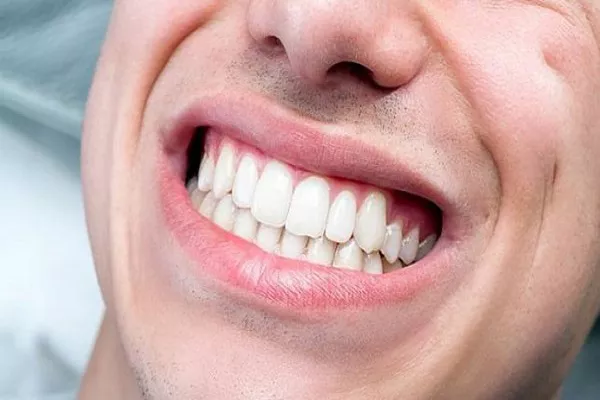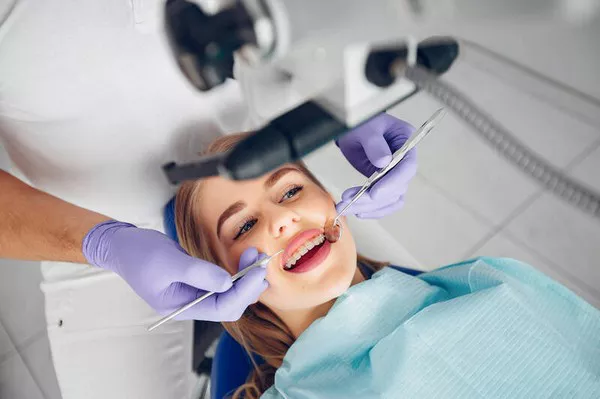In this article, we will explore the use of LED light in teeth whitening procedures. Teeth whitening is a popular cosmetic dental treatment that aims to brighten and enhance the appearance of the teeth. LED light has been introduced as an adjunct to teeth whitening treatments, claiming to improve the results and accelerate the process. Let’s delve into the science behind LED teeth whitening and understand its effectiveness in achieving a brighter and more radiant smile.
Understanding Teeth Whitening:
Teeth whitening is a cosmetic dental procedure designed to remove stains and discolorations from the enamel, the outer layer of the teeth. Over time, the consumption of certain foods and beverages, smoking, poor oral hygiene, and aging can lead to the accumulation of stains on the teeth. Teeth whitening treatments work by using hydrogen peroxide or carbamide peroxide-based bleaching agents to break down and remove these stains, revealing a whiter and brighter smile.
Traditional Teeth Whitening Methods:
In-Office Teeth Whitening: Performed by dental professionals, in-office teeth whitening involves applying a high-concentration bleaching gel to the teeth and using a light source, typically a halogen or LED light, to activate the bleaching process.
At-Home Teeth Whitening: At-home teeth whitening kits include custom-fitted trays or strips that contain a lower concentration of bleaching gel. These kits require daily use over a period of several weeks to achieve desired results.
The Role of LED Light in Teeth Whitening:
LED (Light Emitting Diode) light has become a popular addition to teeth whitening treatments, particularly in in-office procedures. The use of LED light is believed to enhance the bleaching process and potentially improve the final whitening results. Here’s how LED light aids in teeth whitening:
Activation of Bleaching Agents: LED light acts as an activator for the bleaching agents by accelerating the breakdown of hydrogen peroxide or carbamide peroxide molecules. This process helps to release oxygen molecules, which penetrate the enamel and break down the molecular bonds of the staining compounds, leading to brighter teeth.
Light Energy and Heat: LED light emits a specific wavelength of light that generates heat. The combination of light energy and heat can enhance the effectiveness of the bleaching agents, leading to a more efficient and rapid whitening process.
Targeted Application: LED light is often used in conjunction with custom-fitted trays or strips that contain the bleaching gel. The light source is directed onto the teeth, providing targeted application and reducing the risk of gum irritation.
Effectiveness of LED Teeth Whitening:
The effectiveness of LED teeth whitening largely depends on the concentration of the bleaching agent used, the duration of the treatment, and the individual’s teeth and enamel condition. LED light can enhance the whitening process and improve results, but it is essential to consider the following factors:
Stain Type: LED teeth whitening is most effective for extrinsic stains, which are surface stains caused by external factors like coffee, tea, or tobacco. For intrinsic stains, which originate from within the tooth, such as tetracycline stains, the effectiveness of LED whitening may be limited.
Tooth Sensitivity: Some individuals may experience increased tooth sensitivity during or after LED teeth whitening. This sensitivity is usually temporary and can be managed with desensitizing products or the guidance of a dental professional.
Pre-existing Dental Work: Teeth whitening treatments are not effective on dental restorations like crowns, veneers, or fillings. LED teeth whitening may lead to uneven coloration if performed on teeth with existing restorations.
Safety Considerations:
While LED teeth whitening is generally considered safe, it is crucial to undergo the procedure under the supervision of a dental professional to ensure proper application and minimize potential side effects. Individuals with dental restorations, tooth sensitivity, or gum issues should consult their dentist before undergoing any whitening treatment.
Conclusion:
LED teeth whitening is a popular adjunct to in-office teeth whitening treatments, known for its ability to enhance the effectiveness of bleaching agents and potentially improve the final whitening results. By activating the bleaching agents and providing targeted application, LED light aids in breaking down stains and brightening the teeth. However, the success of LED teeth whitening depends on factors such as stain type, tooth sensitivity, and pre-existing dental work. As with any cosmetic dental procedure, it is essential to consult a dental professional before undergoing LED teeth whitening to ensure safety and achieve the best possible results. With the guidance of a qualified dentist and proper dental care, individuals can achieve a radiant and dazzling smile through LED teeth whitening.
Related Topics:





























